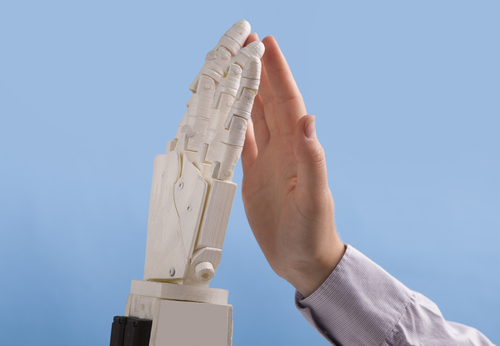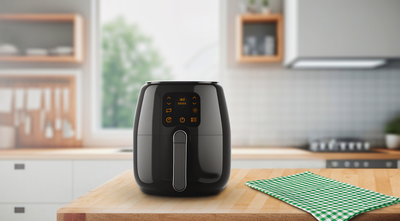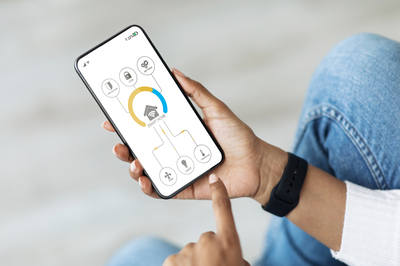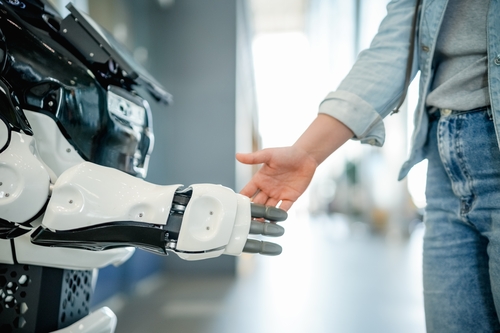
Automatisierung vs. menschliche Interaktion: Das richtige Gleichgewicht im digitalen Zeitalter"
In diesem Beitrag geht es um Automatisierung. Du hast bestimmt den Hype um ChatGPT mitbekommen. Viele sind so begeistert, dass man sich frägt, ob echte, von Menschen verfasste Inhalte bald der Vergangenheit angehören werden.
Aber hier ist eine amüsante Tatsache: Automatisierung gibt es in unserem Leben schon länger, als uns bewusst ist. Denke an die KI-Vorschläge, die dir helfen, deine Sätze zu formulieren, oder an die Algorithmen, die deine Nachrichten anpassen. Automatisierung ist überall. Doch inmitten dieser wachsenden Abhängigkeit von der Technik liegt ein unbestreitbarer Charme in der menschlichen Note.
Nimm als Beispiel diesen Blog. Ich habe angefangen, ihn mit Hilfe von KI zu schreiben. Sicher, während ich tippe, schlägt die KI Wörter vor und versucht, meinen nächsten Schritt vorherzusagen. Aber die Entscheidung, dieses Wort zu verwenden? Das mache ich allein. Es ist die menschliche Note, die das Herz und die Seele der Erzählung ausmacht. Automatisierung ist zwar großartig, aber es geht nichts über die menschliche Note.

Definition von Automatisierung und menschlicher Interaktion: Schmerzpunkte ansprechen
Automatisierung: Wenn ein Produkt oder eine Dienstleistung etwas von selbst tut, ohne dass du Anweisungen gibst.
Menschliche Interaktion: Hier gibt es zwei Arten:
1. ein Mitarbeiter des Unternehmens hilft dir bei der Erbringung der Dienstleistung.
2. Du als Benutzer, handelst oder forderst die Dienstleistung direkt an.
Während die Automatisierung selbständig abläuft, kann die menschliche Interaktion entweder darin bestehen, dass du den Dienst direkt in Anspruch nimmst oder dass dir ein Mitarbeiter des Unternehmens behilflich ist.
Beispiele für Automatisierung und menschliche Interaktion in alltäglichen Anwendungsfällen
1. Den Wecker stellen: Viele entscheiden sich trotz der verfügbaren automatischen Optionen immer noch dafür, den Wecker jede Nacht manuell zu stellen, um sich sicher zu sein.
2. Online einkaufen: Obwohl Online-Bestellungen meist problemlos ablaufen, wenden sich die Nutzer häufig an den Kundendienst, um Änderungen vorzunehmen und sich zu vergewissern.
3. Musik abspielen: Obwohl die Sprachsteuerung eine freihändige Musikauswahl ermöglicht, bevorzugen manche Nutzer aus Gründen der Bequemlichkeit und des Komforts die manuelle Auswahl.
4. Fahren: Autos verfügen über automatische Funktionen wie Tempomat und Fahrspurassistent. Aber der Mensch spielt immer noch eine wichtige Rolle, wenn es darum geht, komplizierte Fahrentscheidungen zu treffen.
5. Automatisierung im Haushalt: Intelligente Geräte können Aufgaben wie die Temperatureinstellung übernehmen. Dennoch legt der Mensch immer noch Präferenzen fest und setzt gelegentlich automatische Einstellungen außer Kraft.
6. Gesundheitswesen: Die Automatisierung hilft bei der Terminplanung und bei Erinnerungen im Gesundheitswesen. Dennoch bleibt der menschliche Kontakt für Diagnose und Pflege unersetzlich.
7 .Kochen: Moderne Geräte verfügen über programmierte Einstellungen für das Kochen. Aber die Zubereitung von Mahlzeiten und die Sicherstellung, dass das Essen richtig gekocht wird, bleibt eine menschliche Aufgabe.
Während die Automatisierung die Aufgaben vereinfacht, bleibt die menschliche Interaktion entscheidend für Präzision, Komfort und Sicherheit bei verschiedenen Tätigkeiten.




Die Bedeutung der Benutzerfreundlichkeit bei der Automatisierung
Wenn du darüber nachdenkst, wie viel Automatisierung du einsetzen willst, ist es wichtig, die Bedürfnisse deiner Nutzer in den Vordergrund zu stellen. Hier ist eine vereinfachte Aufschlüsselung:
1. Suche die Bestätigung: Wenn sich die Benutzer sicher fühlen sollen, solltest du nicht nur automatisieren, sondern auch bestätigen. Beispiel Online-Banking: Die Nutzer wollen sicher sein, dass ihre Transaktionen erfolgreich sind. Zeige ihnen also die Bestätigung oder sende ihnen eine Quittung. Es geht darum, dem User ein sicheres Gefühl zu geben.
2. Beziehe den Nutzer mit ein: Wenn du willst, dass deine Nutzer Nutzer deinen Service wirklich verstehen, musst du sie daran teilhaben lassen. Denke an Sprach-Apps: Sie verwenden eine Mischung aus automatisierten Lektionen und interaktiven Übungen, die Videos mit Live-Interaktionen mischen und die Nutzer zum aktiven Mitmachen und Lernen bewegen.
3. Sei anpassungsfähig: Für Aufgaben wie die Verwaltung ungeplanter Änderungen in einem Projekt oder die Bearbeitung sensibler Kundenanfragen ist ein menschliches Händchen unerlässlich. Die Automatisierung kann zwar Aufgaben planen oder grundlegende Fragen beantworten, aber manchmal braucht man die menschliche Erfahrung und Kreativität.
4. Benutzerfreundliche Gestaltung: Wenn ein digitaler Service schwierig zu bedienen ist, wird er nicht genutzt. Ein Automatisierungssystem sollte einfach zu handhaben sein und den unterschiedlichen Benutzergewohnheiten gerecht werden. Wenn es intuitiv und anpassungsfähig ist, ist die Wahrscheinlichkeit größer, dass es den Nutzern eine positive Erfahrung bietet - die richtige Mischung der Automatisierung hängt also stark davon ab, ob du deine Nutzer verstehen. Wenn du es einfach und intelligent halten, sorgen Sie für einen benutzerfreundlichen und effektiveren Service.

Den Wandel und die Zukunft annehmen
Mit dem technologischen Fortschritt werden die Menschen mehr Automatisierung erwarten. Vor allem jüngere Nutzer werden sich mehr automatisierte Funktionen wünschen, aber weniger Bedarf an menschlicher Unterstützung haben. Um erfolgreich zu sein, sollten Unternehmen eine Mischung aus Automatisierung und menschlicher Zuwendung anbieten, die sich an den Wünschen ihrer Nutzer orientiert. Im Laufe der Zeit wird sich die Art und Weise, wie Menschen und Maschinen zusammenarbeiten, verändern und neue Möglichkeiten eröffnen.
